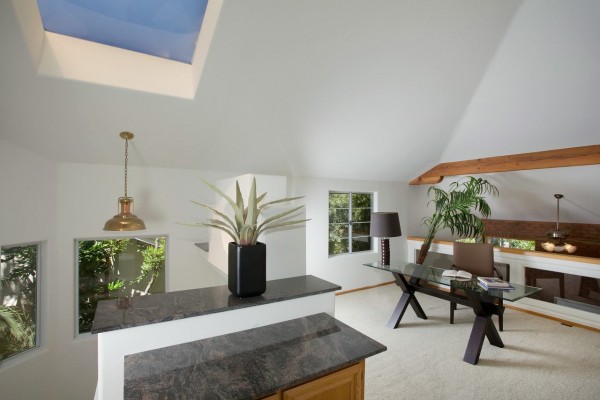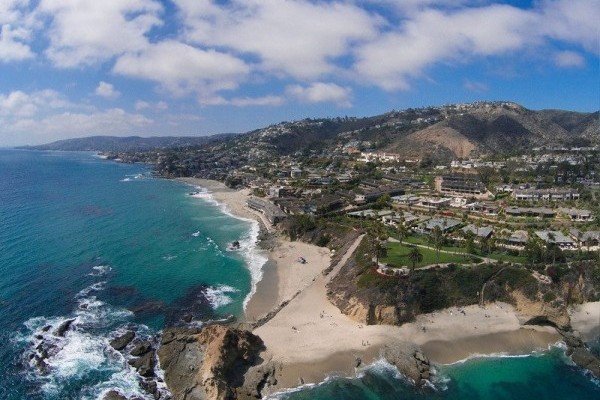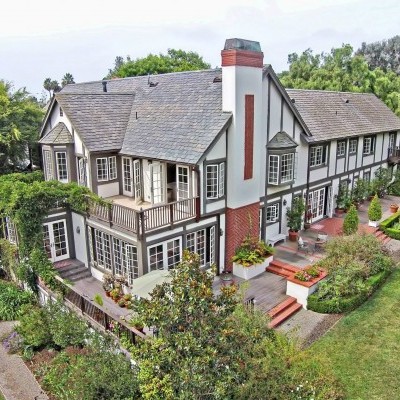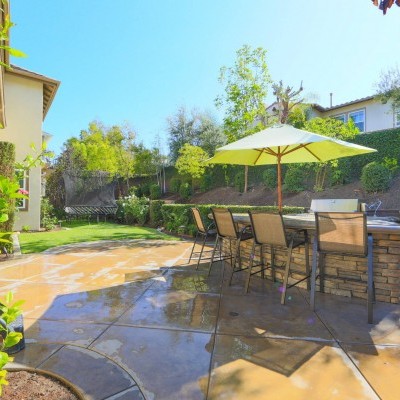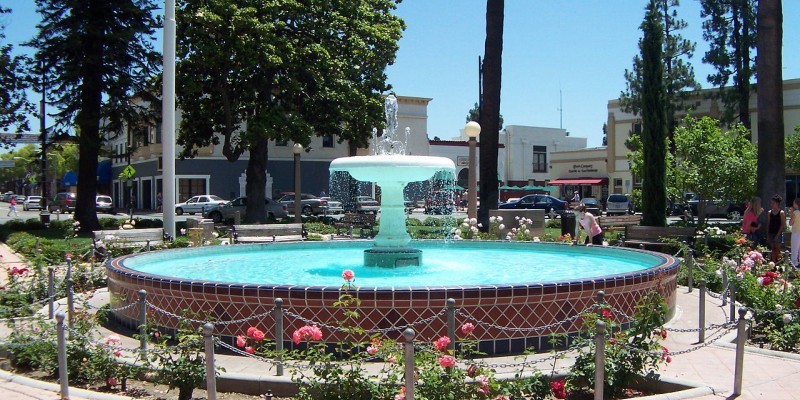
ORANGE CA
Date: 09/28/2015
The city of Orange is located in Orange County, California. It is approximately 3 miles (4.8 kilometers) north of the county seat, Santa Ana. Orange is unusual in that many of the homes in its Old Town District were built prior to 1920. While many other cities in the region demolished such houses in the 1960s, Orange decided to preserve them. The small affluent city of Villa Park is surrounded by the city of Orange. The population was 136,891 as of 2014.
History
Members of the Tongva and Juane%uFFFDo/Luise%uFFFDo ethnic group long inhabited this area. After the 1769 expedition of Gaspar de Portol%uFFFD, an expedition out of San Blas, Nayarit, Mexico, led by Father Jun%uFFFDpero Serra, named the area Vallejo de Santa Ana (Valley of Saint Anne). On November 1, 1776, Mission San Juan Capistrano became the area's first permanent European settlement in Alta California, New Spain.[citation needed]
In 1801, the Spanish Empire granted 62,500 acres (253 km2) to Jos%uFFFD Antonio Yorba, which he named Rancho San Antonio. Yorba's great rancho included the lands where the cities of Olive, Orange, Villa Park, Santa Ana, Tustin, Costa Mesa and Newport Beach stand today. Smaller ranchos evolved from this large rancho, including the Rancho Santiago de Santa Ana.
Don Juan Pablo Grijalva, a retired known Spanish soldier and the area's first landowner, was granted permission in 1809 by the Spanish colonial government to establish a rancho in "the place of the Arroyo de Santiago."
After the Mexican%uFFFDAmerican War, Alta California was ceded to the United States by M%uFFFDxico with the signing of the Treaty of Guadalupe Hidalgo in 1848, and though many Californios lost titles to their lands in the aftermath, Grijalva's descendants retained ownership through marriages to Anglo-Americans.
Since at least 1864, Los Angeles attorneys Alfred Chapman and Andrew Glassell together and separately, held about 5,400 acres (22 km2) along both sides of the Santiago Creek (Glassell also had a 4,000-acre (16 km2) parcel where Costa Mesa is today). Water was the key factor for the location of their townsite. Glassell needed a spot he could irrigate, bringing water down from the Santa Ana Canyon and the quality of the soil may have influenced his choice. Originally the community was named Richland, but in 1873 Richland got a new name. In the book, "Orange, The City 'Round The Plaza" by local historian Phil Brigandi, it states, "In 1873 the town had grown large enough to require a post office, so an application was sent to Washington. It was refused, however, as there was (and is) already a Richland, California in Sacramento County. Undaunted, the Richlanders proposed a new name %uFFFD Orange."
The small town was incorporated on April 6, 1871, under the general laws of the state of California. Orange was the only city in Orange County to be planned and built around a plaza, earned it the nickname Plaza City. Orange was the first developed town site to be served by the California Southern Railroad when the nation's second transcontinental rail line reached Orange County.
The town experienced its first growth spurt during the last decade of the 19th century (as did many of the surrounding communities), thanks to ever-increasing demands for California-grown citrus fruits, a period some refer to as the "Orange Era." Southern California's real estate "boom" of 1886%uFFFD1888, fueled by railroad rate wars, also contributed to a marked increase in population. Like most cities in Orange County, agriculture formed the backbone of the local economy, and growth thereafter was slow and steady until the 1950s, when a second real estate boom spurred development. Inspired by the development of a region-wide freeway system which connected Los Angeles' urban center with outlying areas like Orange, large tracts of housing were developed from the 1950s to the early 1970s, and this continues today, albeit at a much slower pace, at the eastern edge of the city.
Geography
The city has a total area of 25.2 square miles (65 km2), 24.8 square miles (64 km2) of which is land and 0.4 square miles (1.0 km2) of which is water. The total area is 1.75% water.
Climate
| Orange, California | ||||||||||||||||||||||||||||||||||||||||||||||||||||||||||||
|---|---|---|---|---|---|---|---|---|---|---|---|---|---|---|---|---|---|---|---|---|---|---|---|---|---|---|---|---|---|---|---|---|---|---|---|---|---|---|---|---|---|---|---|---|---|---|---|---|---|---|---|---|---|---|---|---|---|---|---|---|
| Climate chart (explanation) | ||||||||||||||||||||||||||||||||||||||||||||||||||||||||||||
|
||||||||||||||||||||||||||||||||||||||||||||||||||||||||||||
|
||||||||||||||||||||||||||||||||||||||||||||||||||||||||||||
Southern California is well known for year-round pleasant weather:
%uFFFD On average, the warmest month is August.
%uFFFD The highest recorded temperature was 110 %uFFFDF (43 %uFFFDC) in 1985.
%uFFFD On average, the coolest month is December.
%uFFFD The lowest recorded temperature was 22 %uFFFDF (-6 %uFFFDC) in 1950.
%uFFFD The maximum average precipitation occurs in January.
The period of April through November is warm to hot and dry with average high temperatures of 74 %uFFFD 84 %uFFFDF (29 %uFFFDC) and lows of 52 %uFFFD 64 %uFFFDF (18 %uFFFDC). Due to the moderating effect of the ocean, temperatures are cooler than more inland areas of Orange County, where temperatures frequently exceed 90 %uFFFDF (32 %uFFFDC) and occasionally reach 100 %uFFFDF (38 %uFFFDC). The period of November through March is somewhat rainy, as shown in the table to right.
The Orange County area is also subject to the phenomena typical of a microclimate. As such, the temperatures can vary as much as 18 %uFFFDF (10 %uFFFDC) between inland areas and the coast, with a temperature gradient of over one degree per mile (1.6 km) from the coast inland. California also has a weather phenomenon called "June Gloom or May Gray", which sometimes brings overcast or foggy skies in the morning on the coast, but usually gives way to sunny skies by noon, during late spring and early summer.
The Orange County area averages 15 inches (385 mm) of precipitation annually, which mainly occurs during the winter and spring (November thru April) with generally light rain showers, but sometimes as heavy rainfall and thunderstorms. Coastal Torrance receives slightly less rainfall, while the mountains receive slightly more. Snowfall is extremely rare in the city basin, but the mountains within city limits typically receive snowfall every winter.
Cityscape
Old Towne, Orange Historic District, a one square-mile around the original plaza, contains many of the original structures built in the period after the city's incorporation. It is a vibrant commercial district, containing Orange County's oldest operating bank and the oldest operating soda fountain. The Historic District was listed on the National Register of Historic Places in 1997, and is the largest National Register District in California. The Old Towne Preservation Association is a non-profit organization dedicated to maintaining the district.
Orange is unique among the region and the state in that it has the second largest concentration of historic buildings. A list of all of the buildings and sites in Orange appears in the National Register of Historic Places.
Architectural styles in Old Towne Orange
- Bungalow
- Craftsman Bungalow
- Arts and Crafts Movement
- Hip roof cottage
- Mediterranean Revival architecture
- Prairie Style architecture
- Spanish Colonial Revival architecture
- Victorian architecture
Largest employers
According to the City's 2011 Comprehensive Annual Financial Report, the top employers in the city are:
| # | Employer | # of employees |
|---|---|---|
| 1 | UC Irvine Medical Center | 4,000 |
| 2 | St. Joseph Hospital | 3,853 |
| 3 | Children's Hospital of Orange County | 2,400 |
| 4 | Orange County Transportation Authority | 990 |
| 5 | Chapman University | 800 |
| 6 | National Oilwell Varco | 800 |
| 7 | City of Orange | 797 |
| 8 | Sybron Dental Specialties | 610 |
| 9 | St. Joseph's Health System | 500 |
| 10 | Aecom | 500 |
| 11 | CaliforniaChoice | 490 |
| 12 | Santiago Canyon College | 490 |
People and culture
Points of interest

Orange is home to parks, lakes, a small zoo, a university, and a wildlife sanctuary.
The Outlets at Orange, a large, outdoor shopping and entertainment center, is located on the western edge of the city. It features Old Navy, Hollister, Ann Taylor Factory Store, and Saks Fifth Avenue OFF 5th as well as high quality entertainment venues including AMC Theatres, Dave & Buster's, Vans Skatepark and Lucky Strike Bowling Center.
Historically, the plaza has been primarily home to a wide variety of antique shops%uFFFDand has become a well known destination amongst antique collectors. A more recent trend has brought clothing boutiques, and several casual and upscale restaurants. It also features two Starbucks locations, mirroring each other on opposite ends of the plaza, RadioShack, Wells Fargo bank, a Masonic lodge, and is within walking distance of Chapman University and the newly reconstructed public library. Films such as That Thing You Do starring Tom Hanks, Accepted starring Justin Long, and Big Momma's House, Ghost Whisperer, Black Sheep were all filmed in the historical Old Town Orange.
The Woman's Club of Orange Organized February 1915, is located near the plaza in the Old Towne District. Their clubhouse, built in 1923%uFFFD1924, is entered in the National Register of Historic Places. In 2009 Woman's Club of Orange, a member of the General Federation of Women's clubs, is still a very active and vibrant club of 180 members. Their annual Flower Show, celebrating its 72nd year in April is a major city event.
For over 100 years, during Labor Day Weekend, the plaza plays host to the Orange International Street Fair. Friends, families and neighbors get together to experience a variety of food, music and dance from cultures around the world. The profits from the event go to non-profit charities that help people in the community.
The "Villa Park Orchards Association" packing house, located along the former Atchison, Topeka and Santa Fe Railway (now BNSF Railway) mainline, is the sole remaining fruit packing operation in Orange County.
The Lewis Ainsworth House is the city's only restored house museum.
Schools, colleges and universities
- Chapman University %uFFFD Home of the Panthers
- Santiago Canyon College %uFFFD Home of the Hawks
- Orange High School %uFFFD Home of the Panthers
- Villa Park High School %uFFFD Home of the Spartans
- El Modena High School %uFFFD Home of the Vanguards
- Orange Unified School District %uFFFD Public School District for Orange and surrounding areas
- Lutheran High School of Orange County %uFFFD Home of the Lancers
- Eldorado Emerson Private School %uFFFD preschool and K-12
- Mcpherson Magnet School; Magnet School Home of the Meteors
- Santiago Charter Middle School %uFFFD "A public school with a private school approach."
















